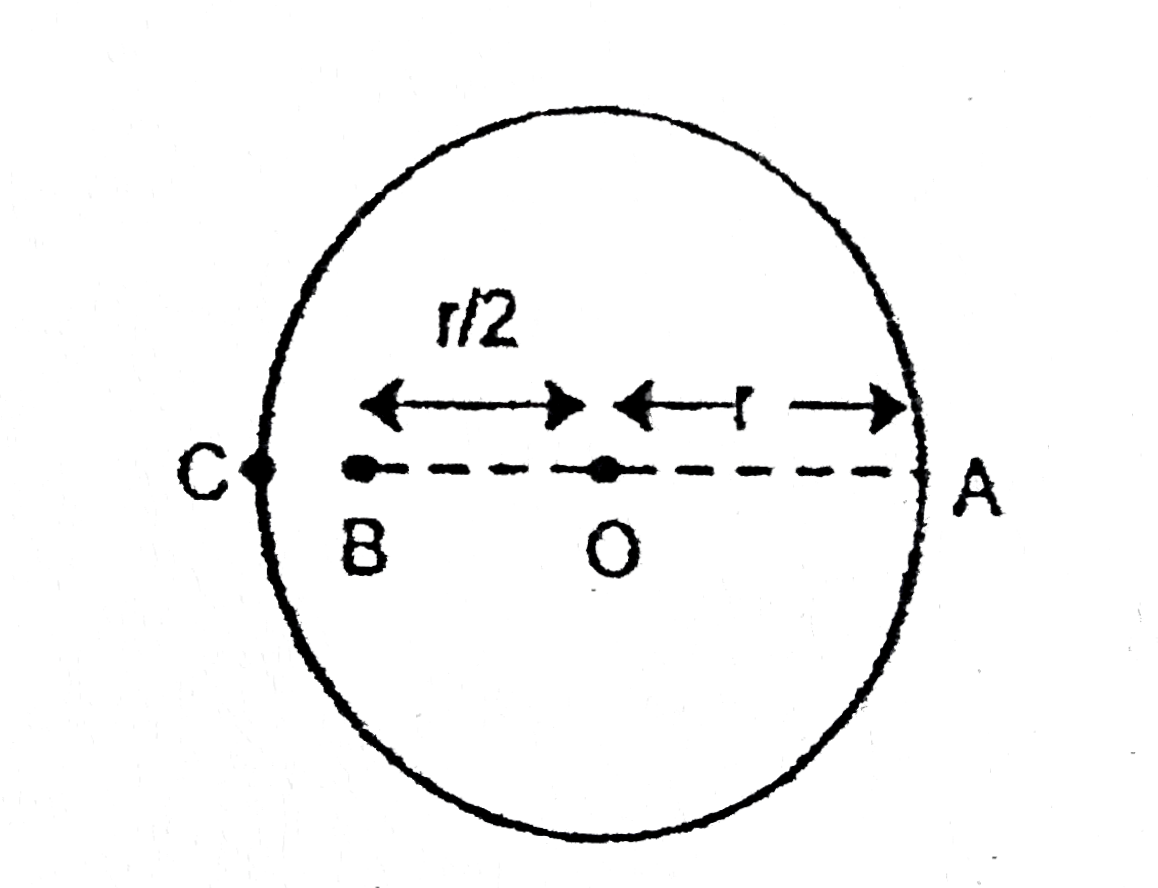A particle is moving in a circular orbit of radius with an angular velocity It jumps to another circular orbit of radius and attains an angular velocity . If , and if no external torque is applied to the system, then the new angular velocity is given by
The correct Answer is:D
Topper's Solved these Questions
Similar Questions
The time period of a satellite in a circular orbit of radius R is T. The period of another satellite in a circular orbit of radius 9R is :
View SolutionA mass of 2 kg is rotating on a circular path of radius 0.8 m with angular velocity of 44rads−1. If the radius of the path becauses 1.0 m, what will be the value of angular velocity?
View Solution
Knowledge Check
A particle moving along a circule path of radius 'r' with uniform angular velocity ω. Its angular acceleration is
Arω2Br/ωCzeroDω/rA particle is revolving in a circle of radius r and centre at 'O' with uniform angular velocity ω. Choose the correct option(s) :
 Athe ratio of angular velocity at A about O and about B is 3:2Bthe angular velocity at A about all points O,B and C is same.Cthe angular velocity at A about C is ω/2Dthe velocity at A and C are same.
Athe ratio of angular velocity at A about O and about B is 3:2Bthe angular velocity at A about all points O,B and C is same.Cthe angular velocity at A about C is ω/2Dthe velocity at A and C are same.A satellite of mass m revolves around the earth of mass M in a circular orbit of radius r, with an angular velocity ω. If raduis of the orbit becomes 9r, then angular velocity of this orbit becomes
A9ωBω9C27ωDω27
An electron revolves in a circular orbit of radius r with angular speed ω . The magnetic field at the centre of electron orbit is
View SolutionThe period of a satellite in a circular orbit of radius R is T, the period of another satellite in a circular orbit of radius 4R is
View SolutionA body of mass 2 kg is rotating on a circular path of radius 0.5 m, with an angular velocity of 20 rad/s. If the radius of the path is doubled, then the new angular velocity will be
View SolutionThe period of a satellite in a circular orbit of radius R is T. The period of another satellite in circular orbit of radius 4 R is :
View SolutionA particle of charge q and mass m moves in a circular orbit of radius r with angular speed ω. The ratio of the magnitude of its magnetic moment to that of its angular momentum depends on
View Solution